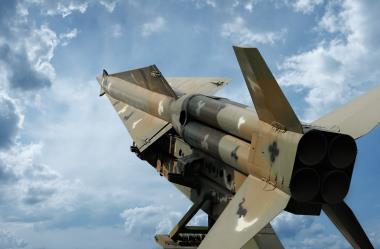As 2011 dawns, there is no diminution of the terrorism risk. The number of toxic spots on the globe which act as havens for the training camps and as fertile recruiting grounds for the bombers grows no smaller
To Afghanistan, Pakistan and Somalia we added Yemen in 2010, the apparent source of the bombs placed on cargo planes in October. With the recent bombing of Moscow’s Domodedovo airport we are reminded that the Caucasus remains a running sore, while Al Qaeda in the Islamic Maghreb has turned the huge Sahel region into a virtual no-go area for Westerners.
In a February 2010 article, Time magazine estimated that the number of militants in that area had swollen from a few score to over 200.
Now, Lebanon is looking fragile once again, while the popular revolt against president Ben Ali in Tunisa, with copycat protests breaking out in Egypt, places a question mark over the future of northern Africa, and whether those countries, too, will remain stable and secure, or whether they will give aid and shelter to the terrorist.
There are as many pundits on the subject as there are fish in a shoal. But, almost ten years on from the attack on the World Trade Center, no one can claim that the ‘war on terror’ is going especially well, at least in the sense of putting an end to the risk.
New solutions to the same old political problems would appear to be thin on the ground. Consequently, no risk manager can any longer get away with thinking that terrorism is a short-term problem.
The most attractive target for terrorists remains the global transport infrastructure, and, in general, that means air transport. The problem for those seeking to contain the risk is that increased security measures in one area merely force the terrorists to change tactics, rather than cease their activities.
If it is hard to get a bomb aboard a passenger aircraft, switch the target to cargo planes (as we saw in the foiled October 2010 plot, which may have been designed to blow up cargo aircraft over US cities).
The bombing of the arrivals hall in Moscow has targeted yet another vulnerable area.
Dr. Gordon Woo, lead catastrophist at RMS, commented: “ It appears that Russian Intelligence might have had some prior notice of an impending attack, but the small size of this conspiracy would have made it hard to interdict. The chance of stopping a plot like this is only about 60%.”
As a direct result, airport operators will already be thinking of ways to introduce security screening for everyone waiting to meet a flight. The result will be added delay, inconvenience, and financial loss – and another small victory for the terrorist.
Risk managers may, however, be encouraged by signs that the insurance industry is slowly getting its act together. In June of last year, the OECD held a conference to discuss ways of ensuring that terrorism risk could remain adequately covered.
It concluded by establishing a permanent international platform on the financial coverage of terrorism risk, whose main focus would be “to monitor the evolution of national systems of terrorism insurance as well as market trends”.
The organisation obviously considered the kind of public/private partnerships established by nine out of the 31 OECD countries, and may well look upon such schemes as ‘best practice’.
The conference also discussed the case for introducing compulsory terrorism insurance to maximise the size of the risk-sharing community, and to increase the ‘stability, resilience and affordability’ of insurance schemes.
The fact that the thought of compulsory terrorism insurance is being floated is an indication that no one expects the risk to become smaller in the foreseeable future, and risk managers should keep an eye open to see whether the idea gains traction. If it does, companies may be faced with an unwelcome extra financial burden, but if the result is increased certainty of the availability and extent of coverage, the effect may not be all bad.



















